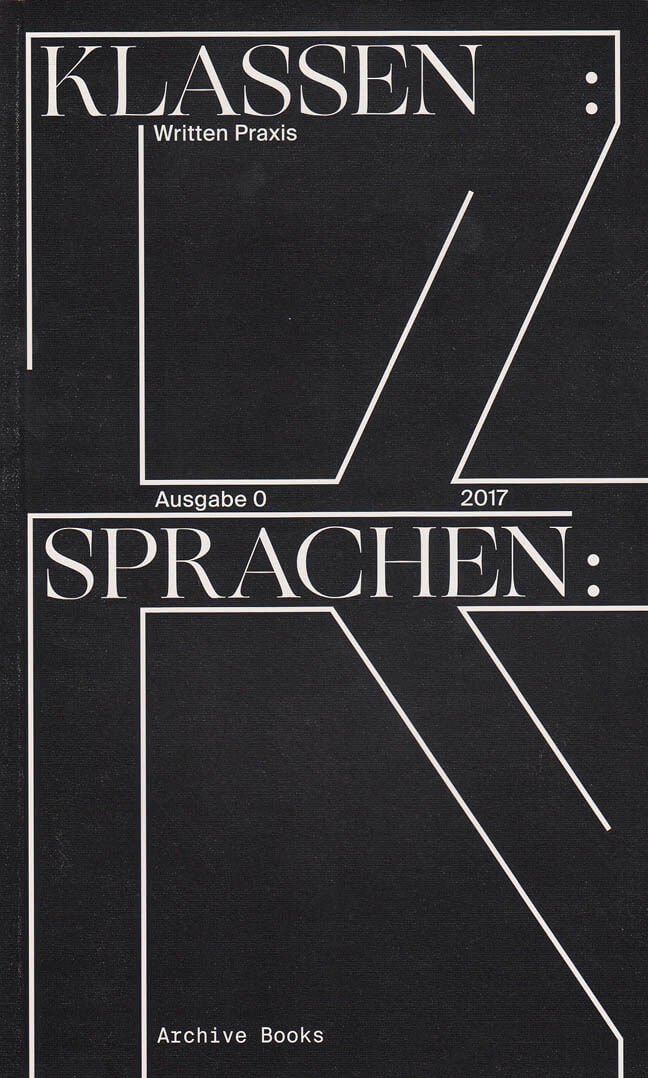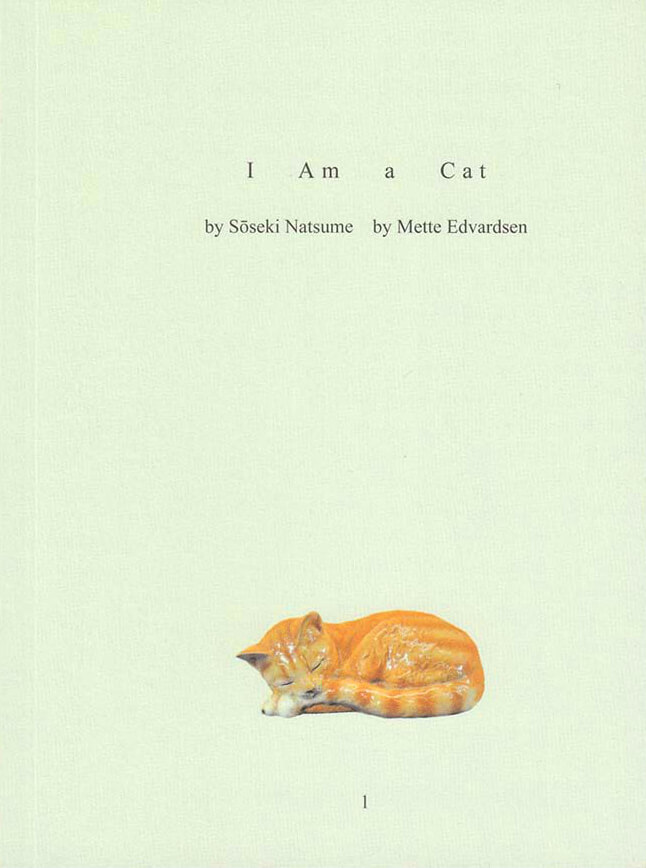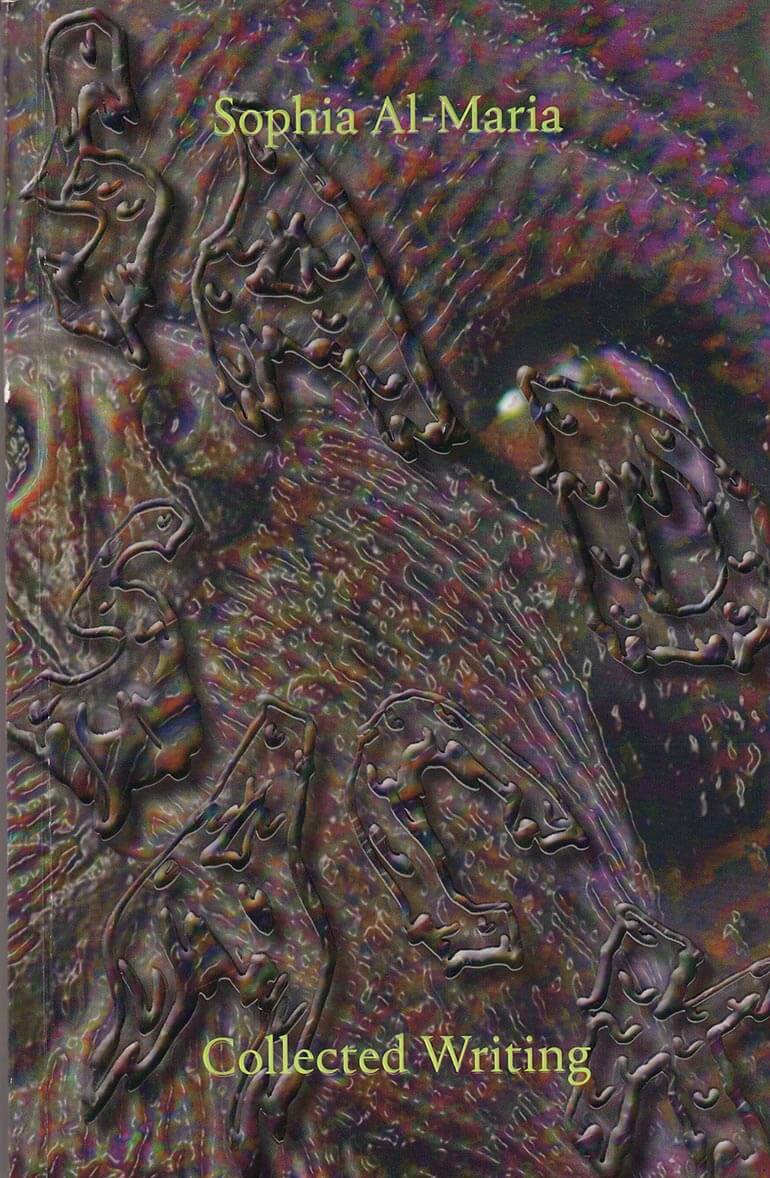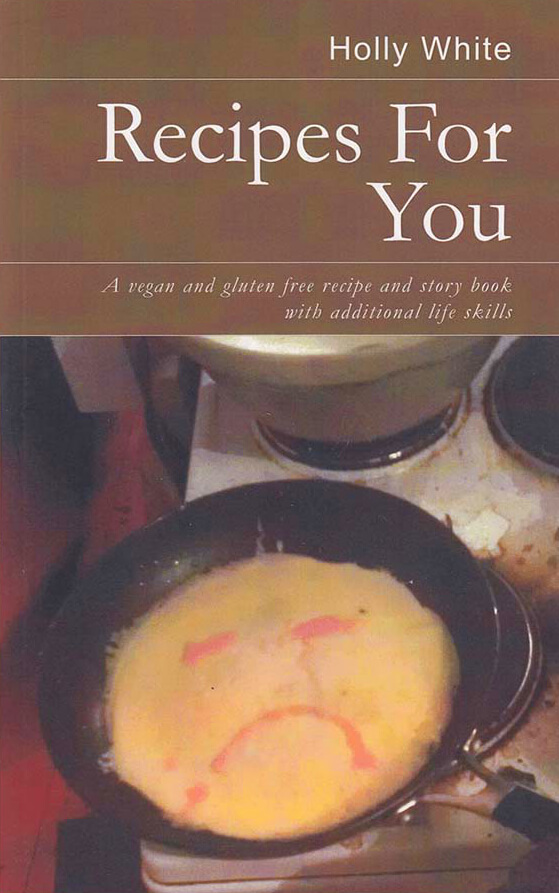Artists' Books
Artists' Books

These are the tools of the present
Mai Abu ElDahab, November Paynter and 1 more
This publication comprises a series of interviews with contemporary artists, musicians, and writers who are in dialogue with Beirut and Cairo. While not purporting to be an overview of the art scenes in these cities, this book begins to draw a picture of how artists think about what it means to be active in the contexts of these cities. It offers insight into the circumstances that structured these artists’ stories, and the often accidental influences that have shaped how their practices have developed.

Reseeding the library, gleaning readership
Afternoon Editions no. 1: an essay by Jeroen Peeters titled Reseeding the library, gleaning readership. In May 2017, Time has fallen asleep in the afternoon sunshine settled during three weeks in the Ravenstein Gallery in Brussels as part of the Kunstenfestivaldesarts. Invited as a writer in residence, Jeroen Peeters visited the library of living books on a daily basis and recorded his observations by hand in a notebook, which formed the basis for Afternoon Edition #1. Reseeding the library, gleaning readership is an essay on the seed library, on the dispersion of literature through wind, water and animals, on biodiversity and commoning at the heart of readership. On the cover a drawing by Wouter Krokaert of a Philodendron Xanadu. Published May 2018.

The Struggle Is Not Over Yet
A conference, hosted by the International Center for the Arts José de Guimarães, borrowed its title from an unfinished film stored in an archive in Bissau. Luta ca caba inda (The struggle is not over yet) was conceived as a documentary film on post-independence Guinea-Bissau, but was abandoned in the editing process in 1980.
The archive testifies to a decade of collective and internationally connected cinema praxis in the country, as part of the people’s struggle for independence from Portuguese colonialism. Fifteen contributors brought their expertise to the task of re-visiting a period of revolutions whose reverberations can still be felt today. A rare coming together of artistic, juridical, cinematographic, curatorial and academic practices, the conference was not only a timely and important occasion to address issues of the post-colony in Portugal, but it also yielded new and experimental ways of convening around an archive, convoking conflicts and probing its topicality in the present.
It took place in a room in which, echoing Édouard Glissant’s notion of the ‘Creole garden’, plants, archival objects, technical props, furniture and people were arranged on equal terms.

Republications
Virginie Bobin, Mathilde Villeneuve
Republications is the first volume of Archive Journal’s hors-séries. Each issue of the series is commissioned to authors whose research is close to the editorial line of the journal. For the inaugural issue Archive’s editors have invited French curators and art critics Virginie Bobin and Mathilde Villeneuve. Taking as a starting point the notion of ‘republication’, the contents of this publication have been compiled through a collective process over the course of multiple editorial meetings in Berlin, Aubervilliers and Paris between 2011 and 2012. The texts assembled in this volume have been written in English or in French.
Contributions by Mathieu Kleyebe Abonnenc, Lene Berg, Pauline Boudry, Renate Lorenz, Christophe Bruno, Foundland, Jeff Guess, Alexis Guillier, Rémy Héritier, Franck Leibovici, Sohrab Mohebbi, Julien Prévieux, Sally Price, Anna Théodoridès, Vassilis Salpistis, Marie Voignier.

Midpoint Cafe
This book portrays a slice of the history of Midpoint Café and Bar in Brussels from 2011 until today, through interviews with one of its owners and a few of the regulars.
Midpoint is a book of interviews with Fatma Arar, Nick Bastis, Carles Congost, Gro Gravås, Jean-Paul Jacquet, Lars Laumann, Stefanie Snoeck, Harald Thys and Margot Vanheusden.
Edited by Laure Charles, Alberto García del Castillo, Louise Osieka and Marnie Slater.

Klassen Sprachen/ Written Praxis
In dictionary entries, after its first appearance the discussed word is represented by its initial: class, class struggle, class contradiction as well as crisis, catastrophe, or colonialism become C. Our C (K in German) stands for Class Languages, and thus for the question of the verbalization, translation, and inscription of those political and social conflicts that determine our contemporary moment. Instead of passing off art as a model for a better politics, we wish to test it for the signatures, the markers and forms of these deeply antagonistic relations of which art itself is a material part: we are concerned with art as a class language, as well as with class languages in art; with art’s room for maneuver as well as with its limits and restrictions, curatorially, in writing and debate.

Time has fallen asleep in the afternoon sunshine
Rêveries du promeneur solitaire
For the project Time has fallen asleep in the afternoon sunshine a group of people/ performers memorize a book of their choice. Together they form a library collection consisting of living books. After years of learning by heart and reciting for readers, some of the books have now been written down from memory to create new editions, versions resulting from this process. This book is one of those books, chosen by one person, learned by heart and recited many times, and now written down again from memory. This edition is not a re-edition of the original text. It is a re-writing of the text after the process of reading, memorizing and reciting, with all the alterations that might have occured in the course of this process.

Time has fallen asleep in the afternoon sunshine
Een dag in 't jaar door Herman Gorter
For the project Time has fallen asleep in the afternoon sunshine a group of people/ performers memorize a book of their choice. Together they form a library collection consisting of living books. After years of learning by heart and reciting for readers, some of the books have now been written down from memory to create new editions, versions resulting from this process. This book is one of those books, chosen by one person, learned by heart and recited many times, and now written down again from memory. This edition is not a re-edition of the original text. It is a re-writing of the text after the process of reading, memorizing and reciting, with all the alterations that might have occured in the course of this process.

Time has fallen asleep in the afternoon sunshine
Verzamelde gedichten - Against the Forgetting
For the project Time has fallen asleep in the afternoon sunshine a group of people/ performers memorize a book of their choice. Together they form a library collection consisting of living books. After years of learning by heart and reciting for readers, some of the books have now been written down from memory to create new editions, versions resulting from this process. This book is one of those books, chosen by one person, learned by heart and recited many times, and now written down again from memory. This edition is not a re-edition of the original text. It is a re-writing of the text after the process of reading, memorizing and reciting, with all the alterations that might have occured in the course of this process.
www.timehasfallenasleepintheafternoonsunshine.be

Time has fallen asleep in the afternoon sunshine
Seltsame Sterne starren zur Erde
For the project Time has fallen asleep in the afternoon sunshine a group of people/ performers memorize a book of their choice. Together they form a library collection consisting of living books. After years of learning by heart and reciting for readers, some of the books have now been written down from memory to create new editions, versions resulting from this process. This book is one of those books, chosen by one person, learned by heart and recited many times, and now written down again from memory. This edition is not a re-edition of the original text. It is a re-writing of the text after the process of reading, memorizing and reciting, with all the alterations that might have occured in the course of this process.

Time has fallen asleep in the afternoon sunshine
I am a Cat by Sōseki Natsume
For the project Time has fallen asleep in the afternoon sunshine a group of people/ performers memorize a book of their choice. Together they form a library collection consisting of living books. After years of learning by heart and reciting for readers, some of the books have now been written down from memory to create new editions, versions resulting from this process. This book is one of those books, chosen by one person, learned by heart and recited many times, and now written down again from memory. This edition is not a re-edition of the original text. It is a re-writing of the text after the process of reading, memorizing and reciting, with all the alterations that might have occured in the course of this process.

Time has fallen asleep in the afternoon sunshine
I am Four Quartets by T.S Elliot
For the project Time has fallen asleep in the afternoon sunshine a group of people/ performers memorize a book of their choice. Together they form a library collection consisting of living books. After years of learning by heart and reciting for readers, some of the books have now been written down from memory to create new editions, versions resulting from this process. This book is one of those books, chosen by one person, learned by heart and recited many times, and now written down again from memory. This edition is not a re-edition of the original text. It is a re-writing of the text after the process of reading, memorizing and reciting, with all the alterations that might have occured in the course of this process.
www.timehasfallenasleepintheafternoonsunshine.be

Sad Sack
Sad Sack is a book of collected writing by Sophia Al-Maria, taking feminist inspiration from Ursula K. Le Guin’s 1986 essay ‘The Carrier Bag Theory of Fiction’; opposing ‘the linear, progressive, Time’s-(killing)-arrow mode of the Techno-Heroic.’ Encompassing more than a decade of work, Sad Sack tracks Al-Maria’s speculative journey as a writer, from the first seed of her ‘premature’ memoir, through the coining and subsequent critique of ‘Gulf Futurism’, towards experiments in gathering, containing, welling up and sucking dry.
For me this book is a bag... Like any single-use carrier bag – I disapprove. It shouldn’t exist, it contributes to pollution, it should be banned... And yet, in spite of the fact I know this book may be a waste product... I’m still writing, redacting, expanding... I’m still waiting, wasting, wanting. According to Ursula, ‘It is a human thing to do to put something you want, because it’s useful, edible, or beautiful, into a bag.' – Sophia Al-Maria

All the Stories
They recite all the stories of the world in a loud voice. When they're done, all the stories, all time and all places will have passed through their lips...’ With the minimum of instructions and a restricted format of four lines, Dora García’s collaborative and participatory project has now collected over 2,500 stories. Ranging from mundane to the extraordinary, these four line vignettes reveal the shared fears and fantasies of the contributors, the pervasiveness of popular culture and the possibilities of the imagination.

A Flower is Speaking to a dog
A set of generative texts following the genetic sequencing of DNA as the underlying structure or score for its characters.
Graphic design by Gerard Herman

Exercise in pathetic criticism
Kate Briggs is the translator of two volumes of Roland Barthes’s lecture and seminar notes at the Collège de France: The Preparation of the Novel (Columbia University Press, 2010) and How to Live Together: Novelistic Simulations of Some Everyday Spaces, due to be published in 2012. Exercise in Pathetic Criticism is the first in a projected series of experiments in literary criticism.

Recipes For You
Recipes for you: A vegan and gluten free recipe and story book with additional life skills is a new cookbook and survival guide by artist Holly White. Rather than selling an aspiration, the book looks honestly at our conflicted relationship with consumption. White intersperses recipes and self-sufficiency notes with prose, as the contributions collected on her food blog (http://holly-white-food.tumblr.com/) spark imagined and remembered references and memories.

We are behind
Presented as the blueprints for three public lectures, We are behind proposes alternative routes through Emily Wardill’s work and represents three different attempts at embodying and dissembling knowledge. Using different formal textual devices, from which they also deviate – a standard lecture, the subject of which becomes something felt, not taught; an a-chronological conversation; and the transcript of a play rendered as a formal essay – each section describes the different facets of an ongoing dialogue between the authors. Fragmented not only by dialogic turns, appropriated texts, images, a score and quotations, and containing extensive reproductions of Wardill’s work, the book’s content and design reflects the labyrinthine, and sometimes hallucinogenic quality of her films and their radical combination of form, content and idea.
Each section focuses on specific works. Section One, The Object, uses The Diamond (Descartes Daughter), SEA OAK, and Gamekeepers without Game, to explore ideas of the rational, public art, the public, linguistic framing and the irrational, via Gladys Knight and the Pips, a hand-drawn hallucinogenic section, Seth Price’s essay Dispersion, Norman Mailer, The Rockridge Institute and Peter Gidal. Section Two, The Window follows a conversations between the authors, that opens onto desire, politics, mirrors, and the films Basking in what feels like ‘An Ocean of Grace’ I soon realise that I am not looking at it but rather, I AM it, recognising myself, Split the View in Two (Part Two), and Sick Serena and Dregs and Wreck and Wreck. In the final part, The Theatre, an apparently formal essay on the implications of framing live action, the proscenium arch as a link between theatre and cinema, Dan Graham, perspective, power and its collapse, transforms into a collection of dialogues around Ben, Sick Serena and Dregs and Wreck and Wreck, authenticity, reality and fiction.

Ladies Wear the Blue
Ladies wear the blue is a collection of watercolour drawings by the hand of Melissa Mabesoone and Oshin Albrecht. The blue watercolours portray women from different moments in time. The adjacent texts describe these women's existence, roles, desires or ideosyncrasies deriving from the 'blue' in their lives. From the first female police officers and Alices all around, to Courtney Love's blue baby dolls and the girl with the blue tattoo Olive Oatman, this publication is an ode to women venturing into the world, and a way to continue telling their herstories.

Skinned Detouched
Skinned and Detouched, a pair of artists books, are a portal to a single performative stage in the industrial production of two large scale sculptures, one of which is on show at Large Glass. The books, including writing by Jennifer Boyd, photography by Thierry Bal and design by Europa, imaginatively document the multiple embodiments and disembodiments involved in one moment in the production of the two works.

Cancelled
TEXTS BY MARLIE MUL, LINDA STUPART AND GEORGIA HORGAN. DESIGN BY MAXIMAGE.

Sleep is the Lover I fear
Sleep is the lover I fear is a translation of the work Das ›Nein‹ scheint für den Traum nicht zu existieren into the 2-dimensional space of printing in the format of a typographic score, taking shape as a long folded leporello,. The work is a close observation of the visual and sonic qualities a text can have by itself. Through arrainging text fragments from Freud’s Traumdeutung as well as feminist science-fiction I create an onomatopoetic language-landscape, that explres ideas around physicality, sleep, dreams and desire.

Que Faire
In Que Faire? a group of local amateur actors focuses on the exchangeable power of spoken word and its transformative nature. The group searches desperately for ideas, they look for a way to save their jobs through the use of language. They go to group therapy, they lock themselves in the writer’s room and they live their collective unemployment in an empty studio of the former Company. In QueFaire? the power of the collective works as a lonely psycothic voice. The city of Noisy-le-Sec where I have lived for 7 months becomes the ground of this fiction and integrates the inhabitants as actors, the activity and the municipal places of the city, gathering and re-inventing the notions of inspiration and creativity at work.
Authors and contributors: Liv Schulman, in collaboration with Alain Farrès, Dominique Martin, Thomas Brehamet-Godet, Gaëtan Alepee, Nathanaëlle Puaud, Emilie Renard, Zoe Charles, Alban Legass, Régine Besenval, Nadège Souillard et Marjolaine Calipel.
Text in French.
Graphic Design: Roxanne Maillet
